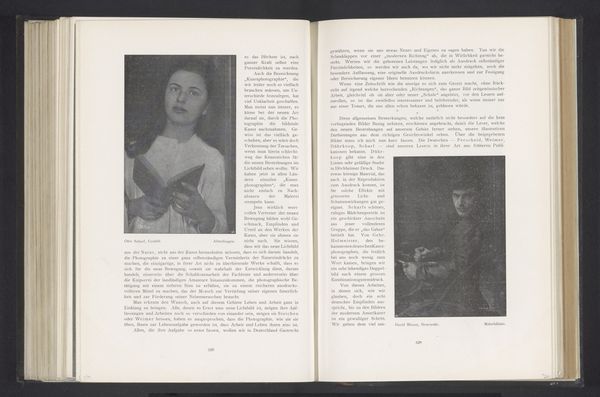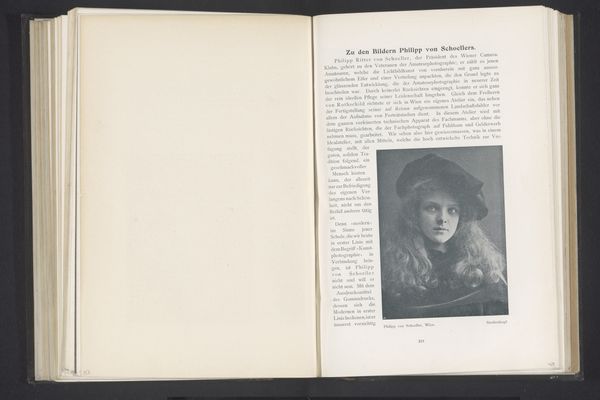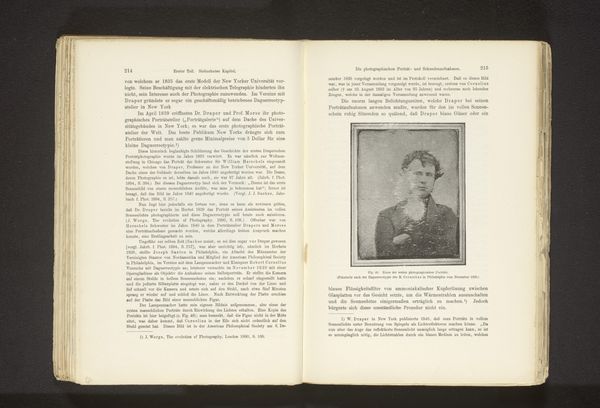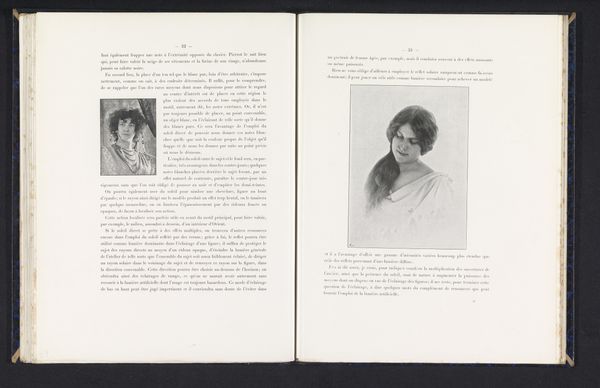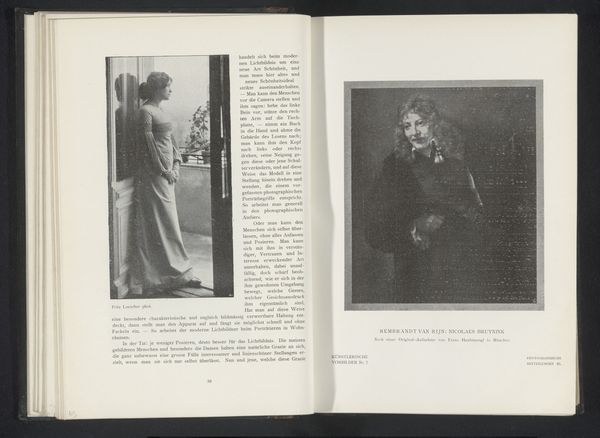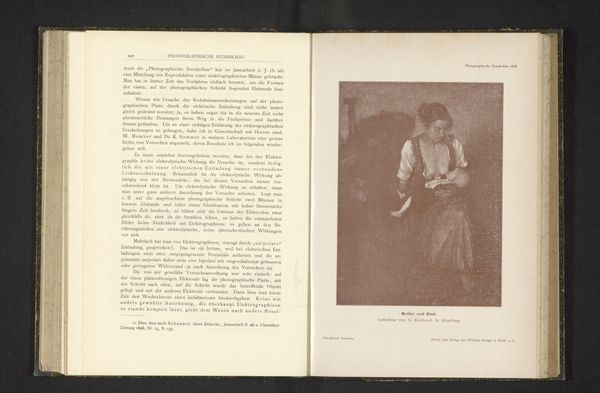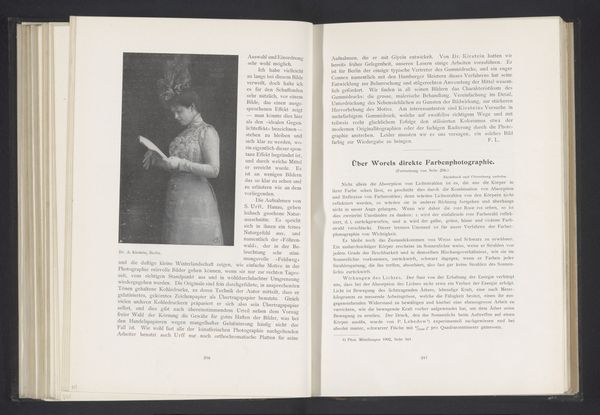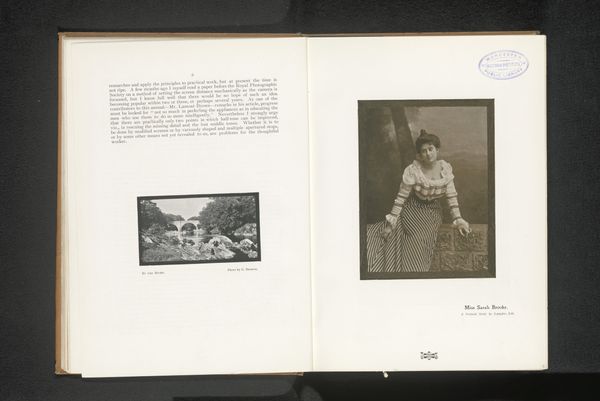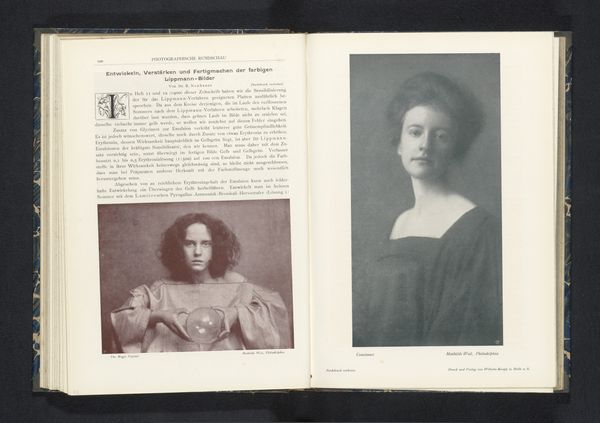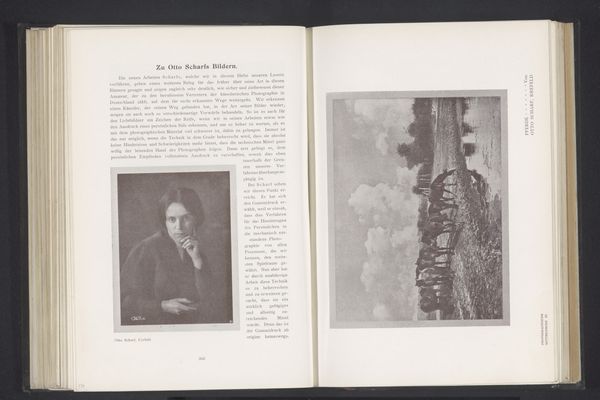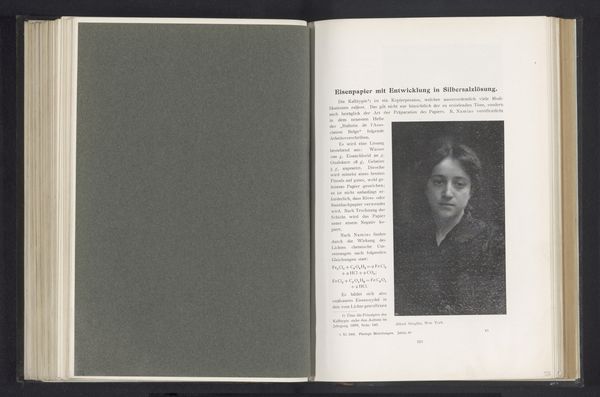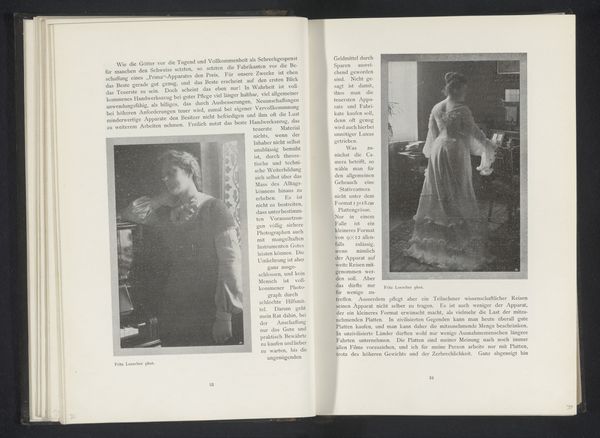
photography, gelatin-silver-print
#
portrait
#
aged paper
#
still-life-photography
#
german-expressionism
#
photography
#
gelatin-silver-print
Dimensions: height 133 mm, width 90 mm
Copyright: Rijks Museum: Open Domain
Curator: Editor: Here we have a photographic portrait, "Portret van een onbekende vrouw," taken before 1903 by Philipp von Schoeller. It's a gelatin silver print displayed within the pages of a book. The image's solemn mood strikes me—what are your thoughts when you look at this piece? Curator: Considering the context, and remembering this dates to before 1903 and comes from a book, how does the presence of these women on printed pages speak to ideas of circulation, control and, ultimately, the power of image production at the turn of the century? Think of the history of portraiture; how has access to having one's image made and seen changed over time, especially for women? Editor: That’s a fascinating way to frame it! I hadn't considered the political implications of visibility in this way. It’s compelling to think about who gets to be seen, who controls that representation, and how photography democratizes, or doesn't, portraiture. The woman on the right side with her striking ruff collar has an ethereal quality—and her gaze is almost challenging. Is she meant to convey status or something else? Curator: The visual coding in these portraits invites many questions: What does her posture, or the contrast in tones and details in their clothing, signal about self-representation? Also, how can thinking about feminism at the turn of the century—women starting to publicly assert themselves and to become educated—reshape our view of the subject, and her agency in this photograph? Editor: You've given me a lot to think about. I initially viewed these as simple portraits, but I see now that their significance lies in understanding their broader historical and social contexts. Considering these women now as actors with potential agency in shaping their self-representation provides a rich and complicated layer to what these portraits convey. Curator: Exactly. This image is less about simply depicting an unknown woman and more about understanding how representation, power, and visibility intersect within a specific historical moment. By approaching the image this way, we move toward understanding representation as a political and gendered act.
Comments
No comments
Be the first to comment and join the conversation on the ultimate creative platform.
